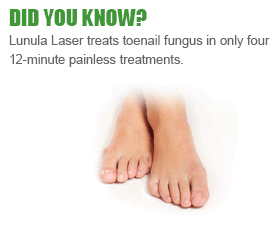Lunula Laser Overview
The Commitment to Research
Since 1996, Erchonia, the manufacturer of Lunula, has been committed to fully elucidating the medical utility of low-level laser therapy through rigorous clinical studies. For nearly 2 decades, Erchonia has studied the clinical utility of low-level laser devices for the treatment of numerous medical ailments, and their recent device, Lunula, looks to revolutionise the way the medical community treats onychomycosis.
Lunula has been markedly studied – from the early in-vitro analysis to the extensive in-vivo studies – and its clinical utility to treat painful and unsightly toenail infections has been substantiated. The unique dual-diode approach of Lunula effectively targets the causative infectious agent while fortifying the body’s natural defense mechanisms. This multifaceted approach is the first of its kind, providing patients with a truly effective, yet safe, treatment for onychomycosis.
Clinical Foundation
Lunula is supported by an unwavering clinical foundation of both histological and clinical evidence that upholds the viability of this approach and ensures an effective treatment for your patients suffering with onychomycosis.
Lunula’s clinical utility for the treatment of onychomycosis has been substantiated by two independent clinical investigations. It is important to mention that neither nail debridement nor topical/oral antifungals were administered during the studies. The first study evaluated 168 toes with an average baseline disease involvement of 81.15%. After a single Lunula treatment, disease involvement was reduced to 31.32% at study endpoint, an improvement in nail clarity of 63.58%. The second study, which was a FDA directed study, evaluated 105 toes, or 75 subjects, after two Lunula treatments separated by a single week. Subjects reported an average clear nail of 73.79% and 79.75% at post-procedure months 3 and 6, respectively. This was a statistically significant change compared with the average 43.4% clear nail measured at baseline. Equally important, the clinical responses observed in both trials were achieved without a single adverse event.


